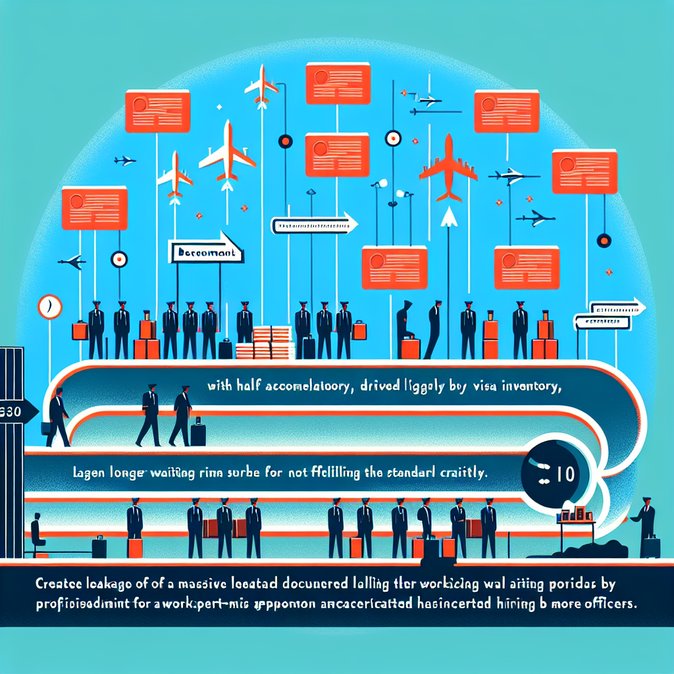
Fresh internal dashboards obtained by VisaHQ reveal that Immigration, Refugees and Citizenship Canada (IRCC) was sitting on 2,200,100 pending files as of 30 September—its highest tally since late-2023. Roughly 996,700 applications (45 percent) are now outside the department’s own service standards, fuelling fresh anxiety among employers awaiting work-permit approvals and families pursuing permanent residence.
The steepest growth is in temporary-resident streams, where study-permit requests jumped 10 percent month-over-month as foreign students queued for the January 2026 intake. Visitor-visa wait times for Indian applicants have stretched to 106 days, while work-permit processing for Labour-Market-Impact-Assessment (LMIA) cases averages 190 days. Unions blame a 20-percent staffing shortfall and say Budget 2025’s CAD 258-million hiring pledge will take up to 18 months to bear fruit.
![IRCC application inventory surges past 2.2 million, reigniting backlog concerns]()
IRCC counters that its Digital Platform Modernisation project and AI triage pilot for visitor visas will cut decision times by up to 30 percent next year. Yet analysts warn that the federal government’s plan to stabilise permanent-resident admissions at 485,000 annually could be undermined if backlogs crowd out high-skilled candidates.
Best-practice tips for mobility managers include prioritising LMIA-exempt categories such as intra-company transferees, filing ‘decision-ready’ applications with upfront medicals, and setting realistic lead times—six to nine months for LMIA-based hires. Corporations should also brief business units on potential onboarding delays and consider bridging work-permits for employees already in Canada.
The data reignites debate over whether Ottawa’s 2026-28 intake caps for students and temporary workers will be enough to relieve pressure. Without further intake throttling, most observers expect the backlog to hover near the one-million mark through mid-2026, making proactive planning essential for global assignments into Canada.
The steepest growth is in temporary-resident streams, where study-permit requests jumped 10 percent month-over-month as foreign students queued for the January 2026 intake. Visitor-visa wait times for Indian applicants have stretched to 106 days, while work-permit processing for Labour-Market-Impact-Assessment (LMIA) cases averages 190 days. Unions blame a 20-percent staffing shortfall and say Budget 2025’s CAD 258-million hiring pledge will take up to 18 months to bear fruit.

IRCC counters that its Digital Platform Modernisation project and AI triage pilot for visitor visas will cut decision times by up to 30 percent next year. Yet analysts warn that the federal government’s plan to stabilise permanent-resident admissions at 485,000 annually could be undermined if backlogs crowd out high-skilled candidates.
Best-practice tips for mobility managers include prioritising LMIA-exempt categories such as intra-company transferees, filing ‘decision-ready’ applications with upfront medicals, and setting realistic lead times—six to nine months for LMIA-based hires. Corporations should also brief business units on potential onboarding delays and consider bridging work-permits for employees already in Canada.
The data reignites debate over whether Ottawa’s 2026-28 intake caps for students and temporary workers will be enough to relieve pressure. Without further intake throttling, most observers expect the backlog to hover near the one-million mark through mid-2026, making proactive planning essential for global assignments into Canada.









